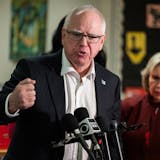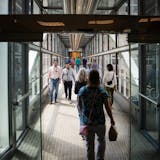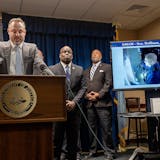Construction to equip all of the Hiawatha light-rail stations to handle longer trains -- as well as build another station in Bloomington -- is ahead of schedule and should be finished by the end of the year, Hennepin County Board members learned Tuesday.
That means that trains with three articulated cars, rather than just two, will be on the tracks and pulling into the new ballpark station by the time the Twins inaugurate Target Field in April, Metro Transit engineer MarySue Abel told the board.
Why the need for longer trains? Because the five-year-old light-rail line, which connects downtown Minneapolis with the airport and the Mall of America, has become a hugely popular transit option.
Last year the line topped 10 million rides, 12 percent more than in 2007. An average of 37,000 commuters rode the trains daily during weekday rush hours.
"The success of the line has really proven that we need to accommodate more ridership," Abel said.
So Metro Transit, using funding from federal and local sources, is lengthening the platforms at nine stations, adapting two downtown stations for the longer trains and replacing scores of bumpy yellow warning strips dislodged by the annual freeze-thaw cycle.
Signals at track crossings are being upgraded to permit trains to run more efficiently in reverse when needed.
The agency also is building a new station that had been planned years ago but was dropped because of cost overruns. The new stop, at American Boulevard and 34th Avenue, will be the fourth station on the line in Bloomington.

![A black bear stopped after crossing Big Bay Road on Madeline Island, the largest of the Apostle Islands in Wisconsin, on Monday, May 31, 2021. ]](https://arc.stimg.co/startribunemedia/PWNYGIY3WTSWDBOGOYD775DPP4.jpg?&w=80&ar=1:1&fit=crop)

